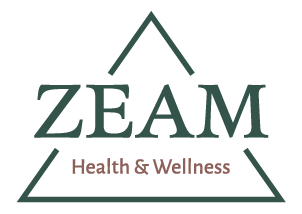Obsessive-compulsive disorder (OCD) is not just about liking things to be clean or being super organized. For many people, OCD feels like their brain is stuck in a loop: the same thoughts, rituals, and anxiety every day. Therapy and medication can be helpful to some people. However, for many others, those options often fall short.
Transcranial magnetic stimulation (TMS) is a non-invasive treatment that uses magnetic pulses to change how parts of the brain function. It is one of the few FDA-cleared therapies for OCD that can actually target the problem at the source. If nothing else has worked, TMS might be the option that finally does.
What TMS Does and How It Works
TMS uses magnetic energy to target specific parts of the brain. During a session, a technician places a magnetic coil on the patient’s scalp. The coil sends short bursts of energy into the brain. These pulses activate or calm specific regions, depending on the treatment protocol.
The process does not involve surgery or anesthesia. Patients remain awake and alert. The only sensations are the tapping from the coil and a clicking sound. Sessions usually last between 20 and 40 minutes. Afterward, most people return to work or school without delay.
TMS is different from electroconvulsive therapy (ECT). ECT requires sedation and triggers a seizure. TMS does not. That difference matters to many patients looking for effective care without major side effects.
Why TMS Helps With OCD
OCD is linked to overactivity in certain parts of the brain. These areas include:
- Anterior cingulate cortex (ACC)
- Dorsomedial prefrontal cortex (dmPFC)
- Supplementary motor area (SMA)
When those regions are overstimulated, obsessive thoughts and compulsive behaviors become harder to manage.
TMS works by adjusting the activity in these areas. It uses high-frequency or low-frequency pulses to help quiet down or rewire overactive circuits. As a result, people often feel less trapped by their obsessions and rituals.
FDA-cleared TMS protocols for OCD specifically target the dmPFC and ACC. Deep TMS (dTMS) is often used because it reaches deeper brain structures. At Zeam Health & Wellness, we use the Magstim Horizon 3.0, an advanced system designed for precision and comfort.
Why TMS Helps With OCD
OCD is linked to overactivity in certain parts of the brain. These areas include:
- Anterior cingulate cortex (ACC)
- Dorsomedial prefrontal cortex (dmPFC)
- Supplementary motor area (SMA)
When those regions are overstimulated, obsessive thoughts and compulsive behaviors become harder to manage.
TMS works by adjusting the activity in these areas. It uses high-frequency or low-frequency pulses to help quiet down or rewire overactive circuits. As a result, people often feel less trapped by their obsessions and rituals.
FDA-cleared TMS protocols for OCD specifically target the dmPFC and ACC. Deep TMS (dTMS) is often used because it reaches deeper brain structures. At Zeam Health & Wellness, we use the Magstim Horizon 3.0, an advanced system designed for precision and comfort.
How Research Supports the Results
TMS for OCD is not a fringe idea. It is backed by years of research. A 2020 meta-analysis reviewed 25 randomized controlled trials involving 860 patients. The study found that repetitive TMS (rTMS) produced a moderate effect size in reducing OCD symptoms. Notably, patients who received rTMS were over three times more likely to respond to treatment than those in the placebo (sham) group.
Data from clinical settings also shows real-world impact. About 38 to 45% of patients see significant symptom relief. Roughly 20% reach full remission. Those are not just numbers. They represent real change for people who have struggled for years.
What to Expect in a Typical TMS Session
Every TMS treatment plan starts with a brain mapping process. The technician identifies a “motor threshold,” which is the smallest amount of energy needed to make a finger or thumb move. This helps determine the correct dosage and placement for the treatment.
After mapping, the sessions begin. You sit in a reclining chair and wear a cap that helps guide the magnetic coil. The coil delivers repeated pulses to the target area. You may feel some tapping on your scalp, but the sensation is generally mild.
Most people undergo treatment five days a week for four to six weeks. Some report improvements in the first two weeks. Others need more time. The process is not rushed. Your treatment plan will be personalized and monitored closely by trained professionals.
Side Effects and Safety
TMS is considered safe and well-tolerated. Common side effects include mild headaches, scalp sensitivity, or muscle twitching near the treatment site. These symptoms usually go away after the first few sessions. Over-the-counter medications are often enough to manage them.
Serious side effects are rare. The risk of seizure is estimated at less than 0.1 percent. TMS is not recommended for people with metal implants near the head or a history of seizures. A clinical evaluation will determine if it is the right fit for you.
Who Benefits Most From TMS
TMS is ideal for people with moderate to severe OCD who have not found success with traditional treatments. If you have tried at least two medications and have completed therapy such as cognitive behavioral therapy (CBT) without major improvement, TMS could be the next step.
It is also helpful for people who want to reduce medication but still need targeted treatment. Since TMS does not affect the whole body the way medication does, many patients appreciate its focused approach.
TMS is not a replacement for therapy. Instead, it is a tool that works best when paired with existing care. Some protocols even involve triggering OCD-related fears before a session to activate the relevant brain circuits. This helps the TMS pulses work more effectively.
Why Choose Zeam for TMS Therapy
At Zeam Health & Wellness, we take a personalized, science-backed approach to mental health care. Our clinics in Folsom, Roseville, and Sacramento offer full psychiatric evaluations, therapy, and advanced treatments like TMS.
We use the Magstim Horizon 3.0 system, one of the most advanced TMS devices available. It allows our team to deliver therapy with a high degree of precision, targeting the exact brain regions involved in OCD. This accuracy improves outcomes and reduces side effects.
We work with you to build a care plan that supports your long-term mental health. TMS may be part of that plan, or it may serve as a bridge to deeper healing when other methods have reached their limit.
Our team will guide you through every stage, from consultation to final session. We will explain the science, monitor your progress, and support you every step of the way.
We believe that healing happens when science meets compassion. At Zeam Health & Wellness, we bring both to every person we care for. Whether you are in Folsom, Roseville, or Sacramento, our team is ready to help you explore whether TMS is the right step.
Contact us today to schedule your consultation and take the first step toward freedom from OCD.




